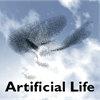Evolving Novel Gene Regulatory Networks for Structural Engineering Designs
IF 1.5
4区 计算机科学
Q4 COMPUTER SCIENCE, ARTIFICIAL INTELLIGENCE
引用次数: 0
Abstract
Engineering design optimization poses a significant challenge, usually requiring human expertise to discover superior solutions. Although various search techniques have been employed to generate diverse designs, their effectiveness is often limited by problem-specific parameter tuning, making them less generalizable and scalable. This article introduces a framework inspired by evolutionary and developmental (evo-devo) concepts, aiming to automate the evolution of structural engineering designs. In biological systems, evo-devo governs the growth of single-cell organisms into multicellular organisms through the use of gene regulatory networks (GRNs). GRNs are inherently complex and highly nonlinear, and this article explores the use of neural networks and genetic programming as artificial representations of GRNs to emulate such behaviors. To evolve a wide range of Pareto fronts for artificial GRNs, this article introduces a new technique, a real value–encoded neuroevolutionary method termed real-encoded NEAT (RNEAT). The performance of RNEAT is compared with that of two well-known evolutionary search techniques across different 2-D and 3-D problems. The experimental results demonstrate two key findings. First, the proposed framework effectively generates a population of GRNs that can produce diverse structures for both 2-D and 3-D problems. Second, the proposed RNEAT algorithm outperforms its competitors on more than 50% of the problems examined. These results validate the proof of concept underlying the proposed evo-devo-based engineering design evolution.为结构工程设计开发新的基因调控网络
工程设计优化是一项巨大的挑战,通常需要人类的专业知识来发现优秀的解决方案。虽然人们已经采用了各种搜索技术来生成多样化的设计,但它们的有效性往往受到特定问题参数调整的限制,因此通用性和可扩展性较差。本文介绍了一个受进化和发展(evo-devo)概念启发的框架,旨在实现结构工程设计的自动进化。在生物系统中,进化-退化通过使用基因调控网络(GRN)来控制单细胞生物向多细胞生物的生长。基因调控网络本质上是复杂和高度非线性的,本文探讨了如何利用神经网络和遗传编程作为基因调控网络的人工代表来模拟这种行为。为了为人工 GRN 演化出各种帕累托前沿,本文介绍了一种新技术,即实值编码神经进化法,称为实值编码神经进化法(RNEAT)。在不同的二维和三维问题上,RNEAT 的性能与两种著名的进化搜索技术进行了比较。实验结果证明了两个重要发现。首先,所提出的框架能有效生成 GRNs 群体,从而为二维和三维问题生成多样化的结构。其次,所提出的 RNEAT 算法在超过 50% 的问题上优于其竞争对手。这些结果验证了所提出的基于进化发展的工程设计进化概念。
本文章由计算机程序翻译,如有差异,请以英文原文为准。
求助全文
约1分钟内获得全文
求助全文
来源期刊

Artificial Life
工程技术-计算机:理论方法
CiteScore
4.70
自引率
7.70%
发文量
38
审稿时长
>12 weeks
期刊介绍:
Artificial Life, launched in the fall of 1993, has become the unifying forum for the exchange of scientific information on the study of artificial systems that exhibit the behavioral characteristics of natural living systems, through the synthesis or simulation using computational (software), robotic (hardware), and/or physicochemical (wetware) means. Each issue features cutting-edge research on artificial life that advances the state-of-the-art of our knowledge about various aspects of living systems such as:
Artificial chemistry and the origins of life
Self-assembly, growth, and development
Self-replication and self-repair
Systems and synthetic biology
Perception, cognition, and behavior
Embodiment and enactivism
Collective behaviors of swarms
Evolutionary and ecological dynamics
Open-endedness and creativity
Social organization and cultural evolution
Societal and technological implications
Philosophy and aesthetics
Applications to biology, medicine, business, education, or entertainment.
 求助内容:
求助内容: 应助结果提醒方式:
应助结果提醒方式:


